Monacor TXA-100HSE Bruksanvisning
Monacor
högtalaranläggning
TXA-100HSE
Läs gratis den bruksanvisning för Monacor TXA-100HSE (3 sidor) i kategorin högtalaranläggning. Guiden har ansetts hjälpsam av 12 personer och har ett genomsnittsbetyg på 5.0 stjärnor baserat på 6.5 recensioner. Har du en fråga om Monacor TXA-100HSE eller vill du ställa frågor till andra användare av produkten? Ställ en fråga
Sida 1/3

TXA-100HSE
Bestell-Nr. • Order No. 17.2440
MONACOR INTERNATIONAL GmbH & Co. KG • Zum Falsch 36 • 28307 Bremen • Germany Copyright
©
by MONACOR INTERNATIONAL. All rights reserved. A-0762.99.03.09.2018
ELECTRONICS FOR SPECIALISTS ELECTRONICS FOR SPECIALISTS ELECTRONICS FOR SPECIALISTS ELECTRONICS FOR SPECIALISTS ELECTRONICS FOR SPECIALISTS ELECTRONICS FOR SPECIALISTS ELECTRONICS FOR
MIC IN
ANT
VOL.
OFFON
POWER
MINMAX
BAT.LOW
OPEN
1
2
3
4 5 6 7 8 9
Sendefrequenzen
Transmitting frequencies
Kanal
Channel
Frequenz
Frequency
Kanal
Channel
Frequenz
Frequency
1
863,050 MHz 864,050 MHz9
2 10863,175 MHz 864,175 MHz
3 11863,300 MHz 864,300 MHz
4 12863,425 MHz 864,425 MHz
5 13863,550 MHz 864,550 MHz
6 14863,675 MHz 864,675 MHz
7 15863,800 MHz 864,800 MHz
8 16863,925 MHz 864,925 MHz
863 – 865 MHz
Pocket Transmitter
for Audio Transmission
These instructions are intended for users without
any specific technical knowledge. Please read the
instructions carefully prior to operation and keep
them for later reference.
1 Applications
In connection with one of the supplied micro phones, the
pocket transmitter TXA-100HSE is used for wireless trans-
mission of speech or vocals to a receiver. It can be set to 16
channels in the UHF range of 863 – 865 MHz and is ideally
suited for combination with the portable amplifier system
TXA-110 from MONACOR. The system is precisely tuned
to the frequencies of the transmitter.
1.1 Conformity and approval
Herewith, MONACOR INTERNATIONAL declare that the
transmitter TXA-100HSE complies with the directive
2014 / 53 / EU. The EU declaration of conformity is avail-
able on the Internet: www.monacor.com
The transmitter is generally approved for operation in
EU and EFTA countries; it is licence-free and requires
no registration.
2 Important Notes
The transmitter corresponds to all relevant directives of
the EU and is therefore marked with
.
•
The transmitter and the microphones are suitable for
indoor use only. Protect them against dripping water
and splash water, high air humidity and heat (admissi-
ble ambient temperature range 0 – 40 °C).
•
For cleaning only use a dry, soft cloth; never use water
or chemicals.
•
If the transmitter is not used for a longer period,
remove the batteries to prevent any damage to the
transmitter due to battery leakage.
•
No guarantee claims for the transmitter and the micro-
phones and no liability for any resulting personal
damage or material damage will be accept ed if the
transmitter and the microphones are used for other
purposes than originally intended, if they are not cor-
rectly operated or not repaired in an expert way.
If the transmitter and the microphones are
to be put out of operation definitively, take
them to a local recycling plant for a disposal
which is not harmful to the environment.
Do not put discharged batteries / defective rechargeable
batteries in the household waste; always take them to
a special waste disposal (e. g. collection container at
your retailer).
3 Operation
1) Open the cover (3) of the battery compartment by
sliding it downwards. Insert two 1.5 V batteries of size
AA / R6 with the positive and negative poles as printed
in the battery compartment. Replace the cover.
2) Screw the antenna (1) into the jack ANT (9).
3) Use the clip (2) to fasten the transmitter to your
clothes, e. g. your belt. Turn the clip by 90°, if requir ed
(will lock into place). For this purpose, slightly release
the screw of the clip and then retighten it.
4) Connect the tie clip microphone or the headband
microphone to the jack MIC IN (7). (To disconnect the
microphone plug from the jack, press the black button
on the plug.)
When using the tie clip microphone, clip it to your
clothes (e. g. tie, lapel), as close as possible to your
mouth. When using the headband microphone, put
on the headband and bend the goose neck to set the
microphone to a convenient position close to your
mouth.
5) Before switching on the transmitter, set the corre-
sponding receiver to an interference-free transmission
channel.
6) Use the rotary switch (6) to set the transmitter to the
same channel.
7) Switch on the transmitter with the POWER switch (4)
[position ON]. The battery LED (8) will show green. If
it shows red after switching on or during operation,
the inserted batteries are almost discharged and must
be replaced.
8) Speak into the microphone. Adjust the optimum vol-
ume with the control VOL. (5). If the volume is too
high, the transmitter will distort: Turn back the control.
If the volume is too low, the S / N ratio will be poor:
Turn up the control.
9) After operation, set the POWER switch to OFF to
switch off the transmitter.
4 Specifications
Type of unit: . . . . . . . . . . . PLL multifrequency trans-
mitter
Radio frequency range:
. . 16 channels863 – 865 MHz,
Transmitting power:
. . . . . < 10 mW (EIRP)
Frequency stability: . . . . . ±0.005 %
Audio frequency range:
. . 50 – 18 000 Hz
Pick-up characteristic
Headband microphone: omnidirectional .
Tie clip microphone: . . . cardioid
Power supply:
. . . . . . . . . .two 1.5 V batteries of size AA
Subject to technical modification.
Taschensender zur Audioübertragung
Diese Anleitung richtet sich an Benutzer ohne be-
sondere Fachkenntnisse. Bitte lesen Sie die Anlei-
tung vor dem Betrieb gründlich durch und heben
Sie sie für ein späteres Nachlesen auf.
1 Einsatzmöglichkeiten
Der Taschensender TXA-100HSE dient, in Verbindung mit
einem der beiliegenden Mikrofone, zur drahtlosen Über-
tragung von Sprache und Gesang an einen Empfänger. Er
kann auf 16 Kanäle im UHF-Bereich 863 – 865 MHz ein-
gestellt werden und lässt sich optimal mit dem mobilen
Verstärkersystem TXA-110 von MONACOR kombinieren,
da das System genau auf die Frequenzen des Senders
abgestimmt ist.
1.1 Konformität und Zulassung
Hiermit erklärt MONACOR INTERNATIONAL, dass der
Sender TXA-100HSE der Richtlinie 2014 / 53 / EU entspricht.
Die EU-Konformitätserklärung ist im Internet verfügbar:
www.monacor.de
Der Sender ist für den Betrieb in den EU- und EFTA-Staaten
allgemein zugelassen und anmelde- und gebührenfrei.
2 Wichtige Hinweise für den Gebrauch
Der Sender entspricht allen relevanten Richtlinien der EU
und trägt deshalb das
-Zeichen.
•
Der Sender und die Mikrofone sind nur zur Verwen-
dung im Innenbereich geeignet. Schützen Sie sie vor
Tropf- und Spritzwasser, hoher Luftfeuchtigkeit und
Hitze (zulässiger Einsatztemperaturbereich 0 – 40 °C).
•
Verwenden Sie für die Reinigung nur ein trockenes,
weiches Tuch, niemals Chemikalien oder Wasser.
•
Bei längerem Nichtgebrauch die Batterien heraus-
nehmen. So bleibt der Sender bei einem eventuellen
Auslaufen der Batterien unbeschädigt.
•
Werden der Sender und die Mikrofone zweckentfrem-
det, falsch bedient oder nicht fachgerecht repariert,
kann keine Haftung für daraus resultierende Sach-
oder Personenschäden und keine Garantie für die Ge-
räte übernommen werden.
Sollen der Sender und die Mikrofone end-
gültig aus dem Betrieb genommen werden,
übergeben Sie sie zur umweltgerechten Ent-
sorgung einem örtlichen Recyclingbetrieb.
Verbrauchte Batterien und defekte Akkus dürfen nicht
in den Hausmüll geworfen werden. Geben Sie sie zur
umweltgerechten Entsorgung nur in den Sondermüll
(z. B. Sammelbehälter im Einzelhandel).
3 Inbetriebnahme
1) Den Batteriefachdeckel (3) nach unten abziehen. In
das Batteriefach zwei 1,5-V-Batterien der Größe Mig-
non (R6, AA), mit den Plus- und Minuspolen wie im
Batteriefach aufgedruckt, einsetzen. Den Deckel wie-
der aufsetzen.
2) Die Antenne (1) in die Buchse ANT (9) schrauben.
3) Den Sender mit der Klemme (2) an der Kleidung befesti-
gen, z. B. am Gürtel. Bei Bedarf lässt sich die Klemme um
90° drehen (rastet ein). Dazu die Schraube der Klemme
etwas lösen und anschließend wieder festziehen.
4) Das Krawatten- oder das Kopfbügelmikrofon an die
Buchse MIC IN (7) anschließen. (Zum Herausziehen
des Mikrofonsteckers aus der Buchse den schwarzen
Knopf am Stecker drücken.)
Bei Verwendung des Krawattenmikrofons dieses
an der Kleidung (z. B. Krawatte, Revers) festklemmen,
möglichst nah am Mund. Bei Verwendung des Kopfbü-
gelmikrofons den Bügel aufsetzen und das Mikrofon
durch Biegen des Schwanenhalses in eine günstige
Sprechposition dicht vor dem Mund bringen.
5) Den Sender noch ausgeschaltet lassen. Zuerst den zu-
gehörigen Empfänger auf einen störungsfreien Über-
tragungskanal einstellen.
6) Den Sender mit dem Drehschalter (6) auf den gleichen
Kanal einstellen.
7) Den Sender mit dem Schalter POWER (4) einschalten
(Position ON). Die Batterieanzeige (8) leuchtet grün.
Leuchtet sie nach dem Einschalten oder während des
Betriebs rot, sind die eingesetzten Batterien fast er-
schöpft und müssen ersetzt werden.
8) In das Mikrofon sprechen. Mit dem Regler VOL. (5) die
optimale Lautstärke einstellen. Bei zu hoher Lautstärke
verzerrt der Sender: Den Regler zurückdrehen. Bei zu
geringer Lautstärke ergibt sich ein schlechter Rausch-
abstand: Den Regler weiter aufdrehen.
9) Nach dem Betrieb zum Ausschalten des Senders den
Schalter POWER auf OFF stellen.
4 Technische Daten
Gerätetyp: . . . . . . . . . . . . PLL-Multifrequenz-Sender
Funkfrequenzbereich:
. . . . 863 – 865 MHz, 16Kanäle
Sendeleistung: . . . . . . . . . < 10 mW (EIRP)
Frequenzstabilität: . . . . . . ±0,005 %
Audiofrequenzbereich: . . . 50 – 18 000 Hz
Richtcharakteristik
Kopfbügelmikrofon: . . . Kugel
Krawattenmikrofon: . . . Niere
Stromversorgung:
. . . . . . . zwei 1,5-V-Mignonbatterien
Änderungen vorbehalten.
Deutsch
English
Produktspecifikationer
| Varumärke: | Monacor |
| Kategori: | högtalaranläggning |
| Modell: | TXA-100HSE |
| Modell: | Handhållet PA-system (Public Adress) |
| Antal kanaler: | 1 kanaler |
| RF-effekt: | 10 mW |
| Sändarens vikt: | 163 g |
| Produktens färg: | Black, Grey |
| Uteffekt (RMS): | - W |
| Frekvensområde: | 863.05 - 864.925 MHz |
| Anslutningsteknologi: | Kabel |
| Strömkälla av typen: | Batteri |
| XLR-ingång: | Ja |
| Batterispänning: | 1.5 V |
| Sändare, djup: | 35 mm |
| Sändare, höjd: | 100 mm |
| Sändare, bredd: | 65 mm |
Behöver du hjälp?
Om du behöver hjälp med Monacor TXA-100HSE ställ en fråga nedan och andra användare kommer att svara dig
högtalaranläggning Monacor Manualer

29 Augusti 2025
högtalaranläggning Manualer
Nyaste högtalaranläggning Manualer
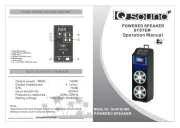
3 Oktober 2025
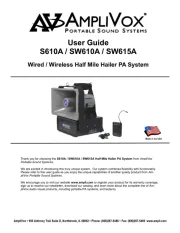
30 September 2025

10 September 2025
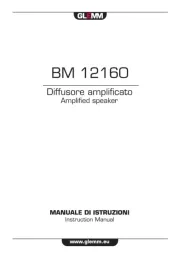
4 September 2025
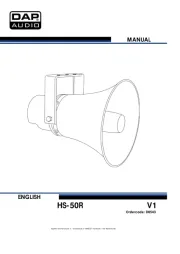
20 Augusti 2025
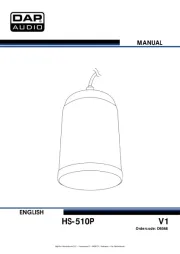
20 Augusti 2025
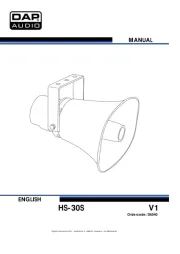
20 Augusti 2025
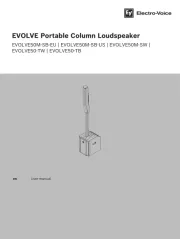
4 Augusti 2025
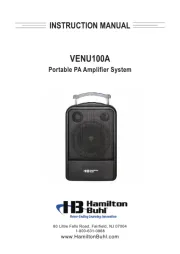
31 Juli 2025

28 Juli 2025